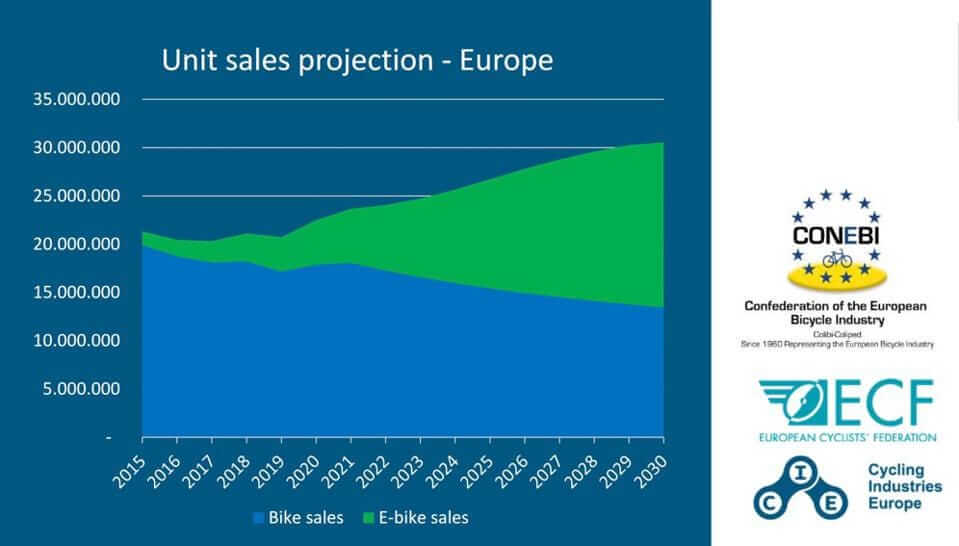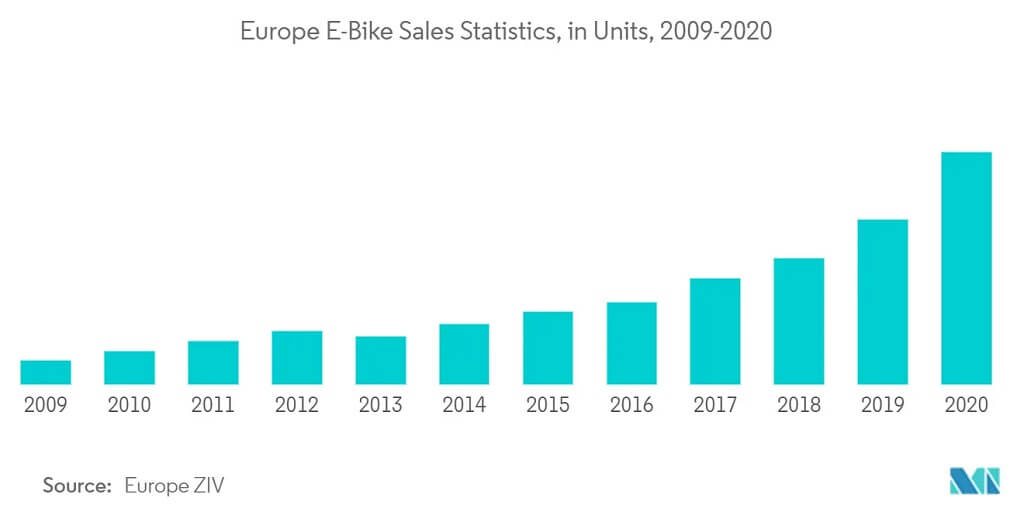Table of Contents
Market Overview
The e-bike market was valued at USD 23.89 billion in 2020 and is expected to reach USD 47.68 billion by 2026, growing at a CAGR of 12.27 % during the forecast period, 2021-2026.
Due to the COVID-19 pandemic outbreak and the subsequent lockdowns (with all the restrictions followed), the production of e-bikes witnessed a decline. However, as life slowly returns to a state of normalcy, the market is picking up pace. Due to the pandemic and the risk of contamination, while commuting via public transport, people are showing an increased interest in buying their own means of commute.
Apart from increasing consumer preference toward recreational and adventure activities, the adoption of e-bike applications in several sectors, like logistics and e-bike rental services, is expected to drive the market studied, during the forecast period.
The market has been segmented by propulsion type and application type. In 2020, by propulsion type, pedal-assisted e-bikes dominated the market and accounted for a significant share of the global market. By application type, the city/urban e-bikes segment dominated the market.
Asia-Pacific is expected to dominate the global market. In Asia-Pacific, China led the regional market. The largest consumption of electric bikes was in China, which boosted the sales figure, thus influencing the growth of the global market for electric bikes.

Key Market Trends
Growing Demand for Eco-friendly Transportation
Due to increasingly busy lives and the need to commute daily, it has become almost necessary to own a vehicle, as public transport often is not reliable. On the back of that, there is a growing concern for preserving and sustaining the environment for future generations, mainly because of the increasing scarcity of natural resources and environmental concerns. This poses a unique challenge for both society and governments. E-bikes are the ideal solution to this problem. They are environment-friendly, and they solve the problem of the daily commute. This is augmenting the demand for e-bikes.
As people’s lives get busy, they need to travel around more nowadays. However, with the continually growing environmental and health concerns, there is an increase in emission levels from transports. Hence, governments and international organizations worldwide are enacting stringent emission norms to reduce carbon emission levels.
Additionally, the depletion of fossil fuel levels at an alarming rate has been creating concerns for sustainability for future generations. This factor is posing a huge challenge for governments and society. Thus, e-bikes are proving to be an ideal solution for this problem.
Europe is the Fastest-growing Market
The European region accounted for approximately 39 % of the e-bike market. The European region was dominated by Germany, followed by France and Italy.
In Germany, e-bike is a preferred mode of commute. E-bikes are also used in this country for sports and leisure. They serve as a clean, quiet, and space-saving alternative for city logistics, in the country.
Apart from Germany, countries, like France, Italy, the Netherlands, and Spain, also witnessed a high demand for e-bikes. Some of the major reasons considered for adopting e-bikes are the health benefits, environmental benefits, reduction in expenditure, avoidance of traffic congestion, and the increase in demand for e-bikes as sports equipment among the youth. In the Netherlands, a quarter of all Europeans were found to be willing to commute by e-bikes.
Competitive Landscape
The e-bike market is extremely fragmented, with the major players holding a low share of the total market share. Some of the major market players are Giant Bicycles, Merida, Trek Bikes, Riese & Muller, and Fritzmeier Systems GmbH & Co. Kg (M1 Sporttechnik). Giant Bicycles is the largest player in this market.

